Nearly a decade after the nuclear accident in Fukushima, Japan, researchers from the University of Georgia have found that wildlife populations are abundant in areas void of human life.
Raccoon dog
The camera study, published in the Journal of Frontiers in Ecology and the Environment, reports that over 267,000 wildlife photos recorded more than 20 species, including wild boar, Japanese hare, macaques, pheasant, fox and the raccoon dog—a relative of the fox—in various areas of the landscape.
UGA wildlife biologist James Beasley said speculation and questions have come from both the scientific community and the general public about the status of wildlife years after a nuclear accident like those in Chernobyl and Fukushima.
This recent study, in addition to the team’s research in Chernobyl, provides answers to the questions.
“Our results represent the first evidence that numerous species of wildlife are now abundant throughout the Fukushima Evacuation Zone, despite the presence of radiological contamination,” said Beasley, associate professor at the Savannah River Ecology Laboratory and the Warnell School of Forestry and Natural Resources.
Species that are often in conflict with humans, particularly wild boar, were predominantly captured on camera in human-evacuated areas or zones, according to Beasley.
“This suggests these species have increased in abundance following the evacuation of people.”
The team, which included Thomas Hinton, professor at the Institute of Environmental Radioactivity at Fukushima University, identified three zones for the research.
Photographic data was gathered from 106 camera sites in three zones: humans excluded due to the highest level of contamination; humans restricted due to an intermediate level of contamination; and humans inhabited, an area where people have been allowed to remain due to “background” or very low levels of radiation found in the environment.
The researchers based their designations on zones previously established by the Japanese government after the 2011 Fukushima Daiichi accident.
For 120 days, cameras captured over 46,000 images of wild boar. Over 26,000 of those images were taken in the uninhabited area, compared to approximately 13,000 in the restricted and 7,000 in the inhabited zones.
Other species seen in higher numbers in the uninhabited or restricted zones included raccoons, Japanese marten and Japanese macaque or monkeys.
Anticipating questions about physiological condition of the wildlife, Hinton said their results are not an assessment of an animal’s health.
“This research makes an important contribution because it examines radiological impacts to populations of wildlife, whereas most previous studies have looked for effects to individual animals,” said Hinton.
The uninhabited zone served as the control zone for the research.
The scientists said although there is no previous data on wildlife populations in the evacuated areas, the close proximity and similar landscape of the human-inhabited zone made the area the ideal control for the study.
The team evaluated the impact of other variables: distance to road, time of activity as captured by the cameras’ date-time stamps, vegetation type and elevation.
“The terrain varies from mountainous to coastal habitats, and we know these habitats support different types of species. To account for these factors, we incorporated habitat and landscape attributes such as elevation into our analysis,” Beasley said.
“Based on these analyses, our results show that level of human activity, elevation and habitat type were the primary factors influencing the abundance of the species evaluated, rather than radiation levels.”
The study’s results indicate the activity pattern of most species aligned with their well-known history or behavior patterns. Raccoons, who are nocturnal, were more active during the night, while pheasants, which are diurnal animals, were more active during the day. However, wild boar inside the uninhabited area were more active during the day than boar in human-inhabited areas, suggesting they may be modifying their behavior in the absence of humans.
One exception to these patterns was the Japanese serow, a goat-like mammal. Normally far-removed from humans, they were most frequently seen on the camera footage in rural human-inhabited upland areas. The researchers suggest this might be a behavioral adjustment to avoid the rapidly growing boar population in the evacuated zone.
The free-roaming menagerie in Fukushima also included the red fox, masked palm civet, weasel, sika deer and black bear. The full list of wildlife captured on camera and additional details on the study can be found at: esajournals.onlinelibrary.wiley.com/doi/full/10.1002/fee.2149
Additional authors on this study include Phillip Lyons, University of Georgia’s Savannah River Ecology Laboratory, Aiken, South Carolina, and UGA’s Warnell School of Forestry and Natural Resources, Athens, Georgia; Kei Okuda and Thomas Hinton, Institute of Environmental Radioactivity, Fukushima University, Fukushima, Japan; and Mathew Hamilton, SREL, Aiken, South Carolina.

![Godzilla battles King Kong in King Kong vs. Godzilla (1962). This film attracted the highest Japanese box office attendance figures in the entire Godzilla series to date.[44]](https://scienceblog.com/wp-content/uploads/2020/01/KK_v_G_trailer_1962-900x441.jpg)
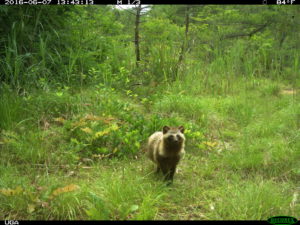
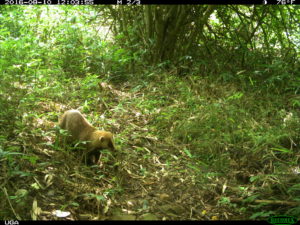
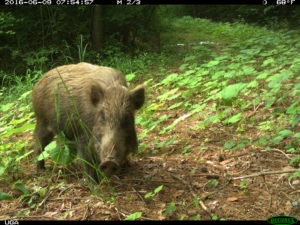
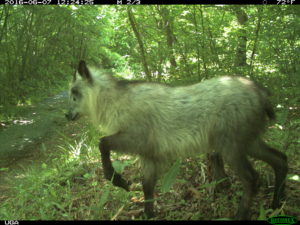

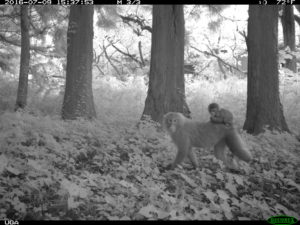

Chernobyl has demonstrated excellent biodiversity without human interference. No big surprise.
Since has been known for several years that wildlife were re-inhabiting human-evacuated areas, the point of this study is to check population abundance only, not to examine radiological effects to individual animals & the animals can thankfully be grateful for that continued little bit of peace. According to Georgia U, this study suggests that species who are often in conflict with humans, “have increased in abundance following the evacuation of people.” Meaning we now have ‘scientific’ proof of this, I guess.